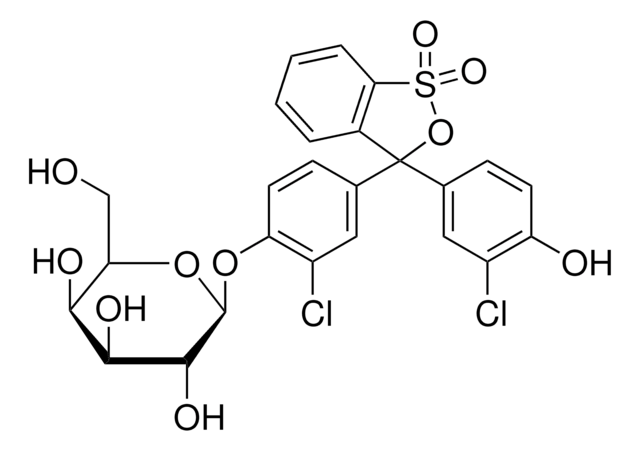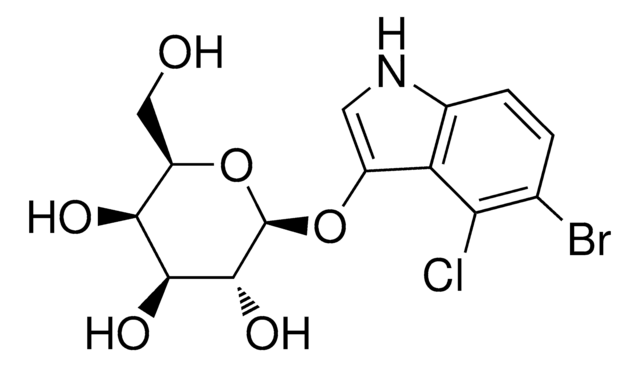Kluczowe dokumenty
B8931
Magenta-Gal
reagent for selection of recombinant bacterial clones
Synonim(y):
Red-Gal, 5-Bromo-6-chloro-3-indolyl β-D-galactopyranoside
About This Item
Polecane produkty
klasa czystości
for molecular biology
Poziom jakości
sterylność
non-sterile
linia produktu
BioReagent
Próba
≥98.0% (HPLC)
Postać
powder
rozpuszczalność
methanol: soluble
przydatność
suitable for substrate for β-galactosidase
temp. przechowywania
−20°C
ciąg SMILES
OC[C@H]1O[C@H](Oc2c[nH]c3cc(Cl)c(Br)cc23)[C@H](O)[C@@H](O)[C@H]1O
InChI
1S/C14H15BrClNO6/c15-6-1-5-8(2-7(6)16)17-3-9(5)22-14-13(21)12(20)11(19)10(4-18)23-14/h1-3,10-14,17-21H,4H2/t10-,11+,12+,13-,14+/m1/s1
Klucz InChI
CHRVKCMQIZYLNM-HTOAHKCRSA-N
Szukasz podobnych produktów? Odwiedź Przewodnik dotyczący porównywania produktów
Powiązane kategorie
Opis ogólny
Zastosowanie
Zasada
produkt powiązany
Kod klasy składowania
11 - Combustible Solids
Klasa zagrożenia wodnego (WGK)
WGK 3
Temperatura zapłonu (°F)
Not applicable
Temperatura zapłonu (°C)
Not applicable
Środki ochrony indywidualnej
Eyeshields, Gloves, type N95 (US)
Certyfikaty analizy (CoA)
Poszukaj Certyfikaty analizy (CoA), wpisując numer partii/serii produktów. Numery serii i partii można znaleźć na etykiecie produktu po słowach „seria” lub „partia”.
Masz już ten produkt?
Dokumenty związane z niedawno zakupionymi produktami zostały zamieszczone w Bibliotece dokumentów.
Klienci oglądali również te produkty
Nasz zespół naukowców ma doświadczenie we wszystkich obszarach badań, w tym w naukach przyrodniczych, materiałoznawstwie, syntezie chemicznej, chromatografii, analityce i wielu innych dziedzinach.
Skontaktuj się z zespołem ds. pomocy technicznej
